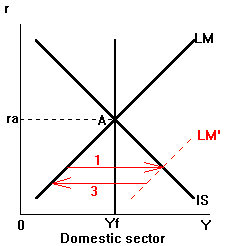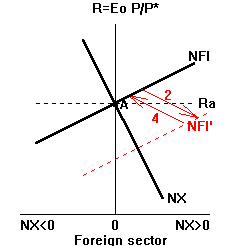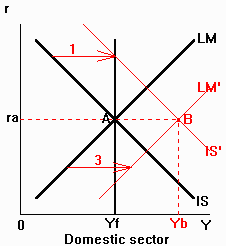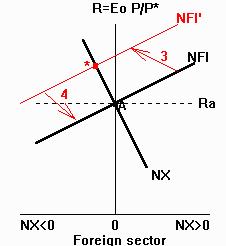| Example 1: Expansionary monetary policy: | |
(1) +M/P => LM shifts right => +Y, -r (2) -r => K-outflows => NFI shifts right => pressure for currency depreciation (3) -M/P to prevent depreciation => LM shifts back (4) +r back to initial equilibrium => NFI shifts back as well. |
  |
| Overall results: monetary policy does not work | |

